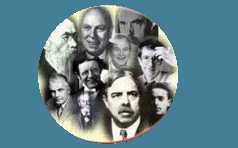| Background | Early 20th century B.F. Skinner – his ideas on Operant Conditioning largely contributed this perspective. Developed as a reaction to the study of mental phenomena. | Mid 20th century George Miller – provided two ideas that are fundamental to this perspective: 1. short-term memory can only hold 5-9 chunks of meaningful information. 2. The human mind functions like a computer – taking in information, processes it, stores and locates it and generates responses to it. Developed as a reaction to behaviorism. | Later 20th century (although ideas of constructivism have existed prior to the 20th century - Dewey, Piaget, Bruner, and Vygotsky) Represents a collection of theories including - generative learning, discovery learning, and situated learning.. Ideas of constructivism come from cognitive psychology, developmental psychology, and anthropology. |
| Definition | Learning occurs when new behaviors or changes in behaviors are acquired as the result of an individual’s response to stimuli. | Learning is a change in knowledge stored in memory. | Learning is the process where individuals construct new ideas or concepts based on prior knowledge and/or experience. |
| Principles | The influence of the external environment contributes to the shaping of the individual’s behavior. The environment presents an antecedent that prompts a behavior. Whether the behavior occurs again is dependent on the consequence that follows it. More on Behaviorism | Governed by internal process rather than by external circumstance (behaviorism). Process of selecting information (Attention), translating information (Encoding), and recalling that information when appropriate (Retrieval). | Individuals construct knowledge by working to solve realistic problems, usually in collaboration with others. Learning as a change in meaning constructed from experience. Individual interpretation of experience vs. objective representation (information processing perspective) More on Constructivism |
| Applications for Instruction | 1. State objectives and break them down into steps 2. Provide hints or cues that guide students to desired behavior. 3. Use consequences to reinforce the desired behavior. | 1. Organize new information. 2. Link new information to existing knowledge. 3. Use techniques to guide and support students’ Attention, Encoding, and Retrieval process. | 1. Pose "good" problems - realistically complex and personally meaningful. 2. Create group learning activities. 3. Model and guide the knowledge construction process. |


